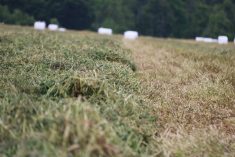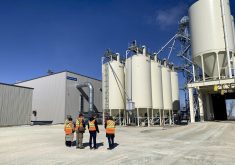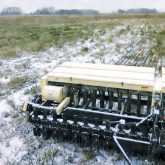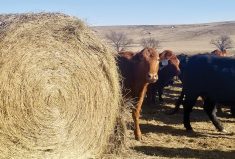Grain farmers can harvest a heap of benefits by cycling perennial forages through their crop rotations, says an agronomist with Federated Co-operatives Ltd.
Ken Wall said the economics of growing forage as a cash crop have changed significantly in recent years due to market conditions and a sharp increase in the price of fuel.
Hay grown locally is in high demand and the prices buyers are willing to pay now compete with grain crops for profitability.
Read Also

Land agreement inked for Cereals Canada GATE facility
James Richardson & Sons, Limited will provide land for the Global Agriculture Technology Exchange (GATE) building in Winnipeg, according to memorandum of understanding with Cereals Canada
Why it matters: Anything farmers can do to reduce costs also reduces their risk exposure.
Based on a harvest of two tonnes per acre, Wall suggested, it’s possible to get $450 to $500 per acre from hay sales, “so it really does start to compete with some of these higher-yielding, higher-dollar annual crops,” he told farmers gathered in one of the speakers’ tents at the recent Ag in Motion outdoor farm show.
However, the cash value is only part of the equation. Because legume forages fix their own nitrogen, they support the crops that follow.
“A legume such as alfalfa can fix up to 250 pounds of nitrogen per year,” he said.
The residual nitrogen builds soil fertility, which increases both yields and protein in a grain crop.
There are other agronomic rationales. A perennial crop can help control salinity – an issue Manitoba producers have struggled with through recent years of water supply extremes. It controls weeds without herbicides and breaks up disease cycles such as aphanomyces.
It also helps build mycorrhizae in the soil, which allows plants to make better use of available phosphorus.
Wall noted the federal government’s target of reducing fertilizer emissions by 30 per cent by 2030. In this too, he argued, forages in the rotation could be a game changer.
“I really do think one of the things that’s going to become a player in this is forages because, again, you can reduce the amount of fertilizer you’re putting in,” he said.
However, Wall cautioned that if farmers want forages to pay like a cash crop, they need to treat it like a cash crop. It must get the same care and attention paid to annuals.
“Treat it like you would your grain crop … that’s my biggest complaint with a lot of cereal grain farmers. They’ll seed all their cereal crops. And then (at) the end of June, when they got everything done, the first pass of the chemical has been put on. Then they’ll think about seeding forages,” he said.
Wall advised farmers to get weed populations under control and prepare a firm seed bed before seeding if they’re interested in the crop. Starter fertilizer will also set forage establishment up for success.
“Don’t cheap out and buy common seed, especially for larger acreages where you really want to get some production,” he advised.
He further encouraged growers to put in a cover crop. That can be harvested as green feed in the first year while the perennial crop gets established, he said.
















